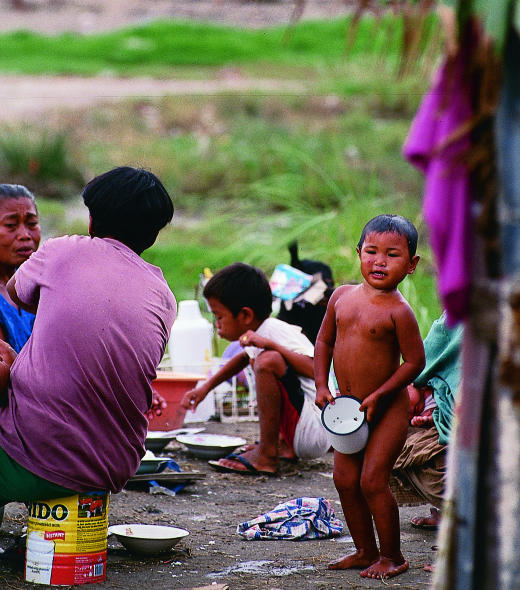Philippine health officials are warning that up to 90%of the country’s population could be infected with tuberculosis within 40 years unless the funding of schemes to stamp out the disease is dramatically increased. More than a third of all Filipinos live below the poverty line, and the problem of tuberculosis is particularly acute in poor areas, according to the World Health Organisation’s 1999 World Health Report.
In the country’s slums, up to 39%of children aged between 5 and 9 are already infected—which is twice the national average. Cramped, overcrowded housing, poor ventilation, low immunity owing to malnutrition, delayed diagnosis, and overpriced drugs all contribute to the escalating incidence of tuberculosis. One in 10 of those infected will go on to develop the disease, and all could infect up to 15 others a year. By 1997, the infection rate among the country’s population of 74 million was 63
Tuberculosis is now the country’s fourth biggest cause of death, killing 20000 people a year and disabling hundreds of thousands more. The antituberculosis programme DOTS (directly observed treatment with short course), where in use, has proved highly effective in stamping out the disease. In the scheme, a community volunteer is assigned to a patient to ensure that he or she takes the daily drug treatment over the required six month period. But only a minority of people benefit from this one to one support: the cash strapped health department can afford to give free drugs to only a third of those needing treatment. In this respect the country is lagging far behind the other most affected countries in the region—in Cambodia and Vietnam 90%of those with tuberculosis receive free drugs and in China 50%.
Dr Dongil Ahn, the WHO’s medical officer for tuberculosis, said: “At the moment, the Philippine health department is allocating 150 million pesos [£2.5m; $4m] for its tuberculosis budget, but it needs to triple that sum—as well as improve its technical capacity—if this problem is going to be brought under control. Three years ago, it cost the government 600 pesos to treat one patient for the necessary six months. But since the currency devaluation during the Asian economic crisis, the costs have doubled, so it’s more difficult for the authorities to buy the drugs.”
Patients without access to the DOTS programme have to buy their drugs from private pharmacies at up to five times the cost, Dr Ahn added. Many take the drugs for only a few weeks until the symptoms have subsided. “Unfortunately they are far from cured, and this is creating a worrying drug resistance problem,” he said. Hospitals report drug resistance in up to 40%of cases, although most hospital patients are already chronically ill by the time drug treatment begins. A health department official said that he hoped more money would be available for funding the DOTS programme by next year. He said: “Right now, we’re just concentrating on treating the adult patients, because they are more infectious than children.”
Figure.
CHRIS STOWERS/PANOS PICTURES
Philippine slums: tuberculosis affects many, but too few are treated



